
The Kingdom of the East Saxons, referred to as the Kingdom of Essex, was one of the seven traditional kingdoms of the Anglo-Saxon Heptarchy. It was founded in the 6th century and covered the territory later occupied by the counties of Essex, Middlesex, much of Hertfordshire and west Kent. The last king of Essex was Sigered of Essex, who in 825 ceded the kingdom to Ecgberht, King of Wessex.

Southend-on-Sea, commonly referred to as Southend, is a coastal city and unitary authority area with borough status in southeastern Essex, England. It lies on the north side of the Thames Estuary, 40 miles (64 km) east of central London. It is bordered to the north by Rochford and to the west by Castle Point. It is home to the longest pleasure pier in the world, Southend Pier. London Southend Airport is located north of the city centre.
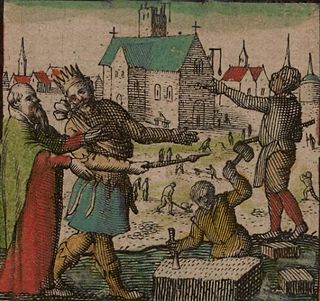
Sæberht, Saberht or Sæbert was an Anglo-Saxon King of Essex, in succession of his father King Sledd. He is known as the first East Saxon king to have been converted to Christianity.

World Museum is a large museum in Liverpool, England which has extensive collections covering archaeology, ethnology and the natural and physical sciences. Special attractions include the Natural History Centre and a planetarium. Entry to the museum is free. The museum is part of National Museums Liverpool.

Leigh-on-Sea, commonly referred to simply as Leigh, is a town and civil parish in the city of Southend-on-Sea, in the ceremonial county of Essex, England. In 2011 it had a population of 22,509.
The Prittlewell royal Anglo-Saxon burial or Prittlewell princely burial is a high-status Anglo-Saxon burial mound which was excavated at Prittlewell, north of Southend-on-Sea, in the English county of Essex.

Prittlewell is an inner city area and former civil parish in Southend-on-Sea, in the ceremonial county of Essex, England. Historically, Prittlewell is the original settlement of the city, Southend being the south end of Prittlewell. The village of Prittlewell was originally centered at the joining of three main roads, East Street, West Street, and North Street, which was extended south in the 19th century and renamed Victoria Avenue. The principal administrative buildings in Southend are located along Victoria Avenue, although Prittlewell is served by Prittlewell railway station.

Beecroft Art Gallery is a gallery in Southend-on-Sea, Essex, England. Prior to 2014, the gallery was formerly located in and Edwardian building on Station Road at Westcliff-on-Sea which was donated to the people of Southend-on-Sea in 1952 by Walter Beecroft (1885–1961) to house his eclectic collection of art works. Beecroft was a solicitor in nearby Leigh. He had already set up an Art Gallery Sub-Committee of the Public Libraries & Museum Committee in 1928, and in 1947 he proposed to endow a building to become and Art Gallery. Eventually, this led to the Beecroft Art Gallery on Station Road. Beecroft also endowed the Beecroft Bequest, an art purchase fund administered by the Museums Association. The gallery was resited in 2014 to the former home of the Central Library on Victoria Avenue, Southend-on-Sea.

Essex is a county in the East of England which originated as the ancient Kingdom of Essex and one of the seven kingdoms, or heptarchy, that went on to form the Kingdom of England.

The A1159 road is a short road skirting the north of Southend-on-Sea from Thorpe Bay to London Southend Airport, in the coastal city of Southend-on-Sea, Essex.

The Museum of Archaeology and Anthropology, also known as MAA, at the University of Cambridge houses the university's collections of local antiquities, together with archaeological and ethnographic artefacts from around the world. The museum is located on the university's Downing Site, on the corner of Downing Street and Tennis Court Road. In 2013 it reopened following a major refurbishment of the exhibition galleries, with a new public entrance directly on to Downing Street.
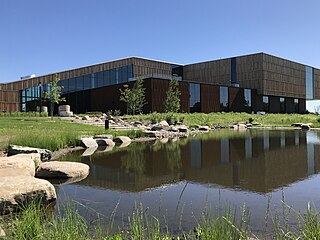
The Bell Museum, formerly known as the James Ford Bell Museum of Natural History, is located at the University of Minnesota's Saint Paul campus. The museum's current location on the Saint Paul campus opened in 2018. The Minnesota wildlife dioramas showcase animal specimens from around the world. The museum also houses the digital Whitney and Elizabeth MacMillan Planetarium. The museum is part of the university's College of Food, Agricultural and Natural Resource Sciences. The museum's former location on University of Minnesota's Minneapolis campus closed in January 2017.
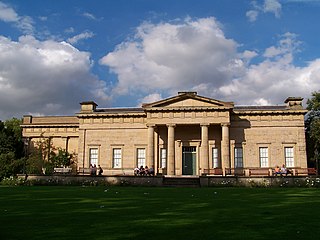
The Yorkshire Museum is a museum in York, England. It was opened in 1830, and has five permanent collections, covering biology, geology, archaeology, numismatics and astronomy.

Camp Bling was a UK-based road protest camp set up in Southend-on-Sea, Essex during September 2005 to obstruct a £25 million plan to widen the Priory Crescent section of the A1159 road over the Royal Saxon tomb in Prittlewell. In April 2009 the authority announced that plans to build the road had been abandoned and the camp was disbanded in July 2009.

EKCO was a British electronics company producing radio and television sets from 1924 until 1960. Expanding into plastic production for its own use, Ekco Plastics produced both radio cases and later domestic plastic products; the plastics company became Lin Pac Mouldings Ltd.
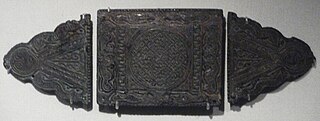
Mucking is an archaeological site near the village of Mucking in southern Essex. The site contains remains dating from the Neolithic to the Middle Ages—a period of some 3,000 years—and the Bronze Age and Anglo-Saxon features are particularly notable.

Prittlewell Priory is a medieval priory in the Prittlewell area of Southend, Essex, England. It was founded in the 12th century, by monks from the Cluniac Priory of St Pancras in Lewes, East Sussex, and passed into private hands at the time of the Dissolution of the Monasteries under Henry VIII. The last private owner, the jeweller R. A. Jones, gave the priory and the grounds to the local council. The grounds now form a public park, Priory Park, and the Grade I listed building is open to the public as a museum. The remains of the priory are a scheduled monument.

The Ormside Bowl is an Anglo-Saxon double-bowl in gilded silver and bronze, with glass, perhaps Northumbrian, dating from the mid-8th century which was found in 1823, possibly buried next to a Viking warrior in Great Ormside, Cumbria, though the circumstances of the find were not well recorded. If so, the bowl was probably looted from York by the warrior before being buried with him on his death. The bowl is one of the finest pieces of Anglo-Saxon silverwork found in England.
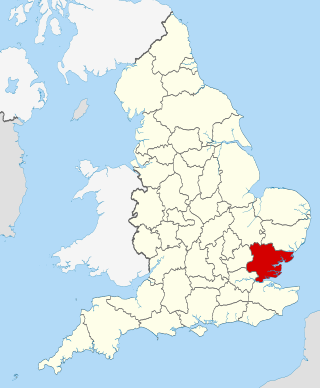
Essex is a ceremonial county in the East of England, and one of the home counties. It is bordered by Cambridgeshire and Suffolk to the north, the North Sea to the east, Kent across the Thames Estuary to the south, Greater London to the south-west, and Hertfordshire to the west. The largest settlement is Southend-on-Sea, and the county town is Chelmsford.






















